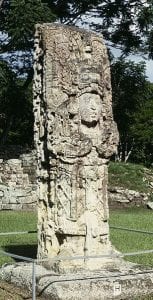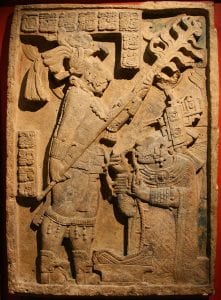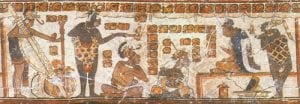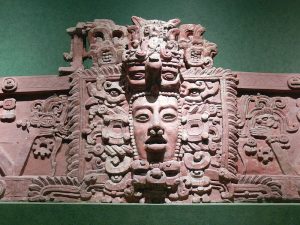The Mayans
Resources, articles, and posts about the culture of the Mayans
Resources, articles, and posts about the culture of the Mayans

While agriculture was the basis of Maya civilization, trade was equally important. During the early Pre-Classic period, Maya living in small villages were somewhat self-sustaining. However, as the Maya began building their great cities, only trade would have brought them the essential goods they needed, such as salt and obsidian.…

Unlike the Aztec Empire, the Maya had no central controlling government. Rather, each Maya city-state had its own individual ruling family that controlled the city and surrounding rural area. Some city-states were larger and controlled other smaller city-states, ruling them indirectly but taking tribute from the smaller polity. The king,…

The Maya had a large hierarchy of priests, who were second in importance in Maya culture only to the king himself. Priests communicated with the gods and were intermediaries between the Maya people and their deities. Maya priests were the keepers of knowledge. They learned and taught reading and writing.…

The noble class of the Maya was much smaller than any other class, but they were far more wealthy and powerful. Maya nobles, known as almehenob, filled the priesthood, or became government officials, court officers, town rulers, scribes, tribute collectors, military leaders and administrators. Their position, as well as their…

Maya craftsmen had a slightly easier life than the hard, physical labor of the farmers. Artisans were still commoners, but rather than heading off to the milpas, they would work creating beautiful items such as jewelry, textiles, pottery and feather cloaks and headdresses. The artistry of the Maya Classical Era…

Maya commoners made up the widest but lowest part of their society's social pyramid. As in most of the Mesoamerican cultures, daily life depended on social class. At the top were the king and noble families. Most nobles were elite warriors, priests, scribes or government officials. In the middle were…

Maya culture shared many characteristics with other Mesoamerican cultures such as the Olmec, Zapotec or Aztec, but retained some features purely Mayan. The Maya, for example, had the only writing system that represented the spoken language of the Mayans. While other Mesoamericans also had a form of pictographic writing, the…
![Artist’s copy of a mural at the Temple of the Murals at Bonampak by Elelicht (Own work) [CC-BY-SA-3.0 (http://creativecommons.org/licenses/by-sa/3.0)], via Wikimedia Commons](/wp-content/uploads/2014/07/800px-Bonampak_Painting-300x208.jpg)
Since Mayan culture formed, dissolved and reformed over many hundreds of years, scholars divide the years into three main time periods: Pre-Classic (2000 B.C. to A.D. 250), Classic (A.D. 250 to 900) and Post-Classic (900 to 1519). These eras are briefly described here, but will be more fully covered in…










![Artist’s copy of a mural at the Temple of the Murals at Bonampak by Elelicht (Own work) [CC-BY-SA-3.0 (http://creativecommons.org/licenses/by-sa/3.0)], via Wikimedia Commons](/wp-content/uploads/2014/07/800px-Bonampak_Painting-300x208.jpg)


